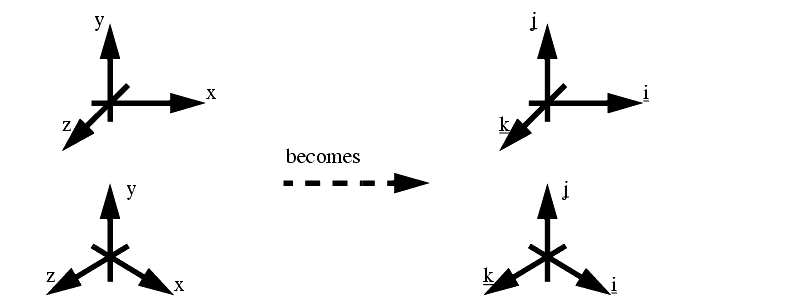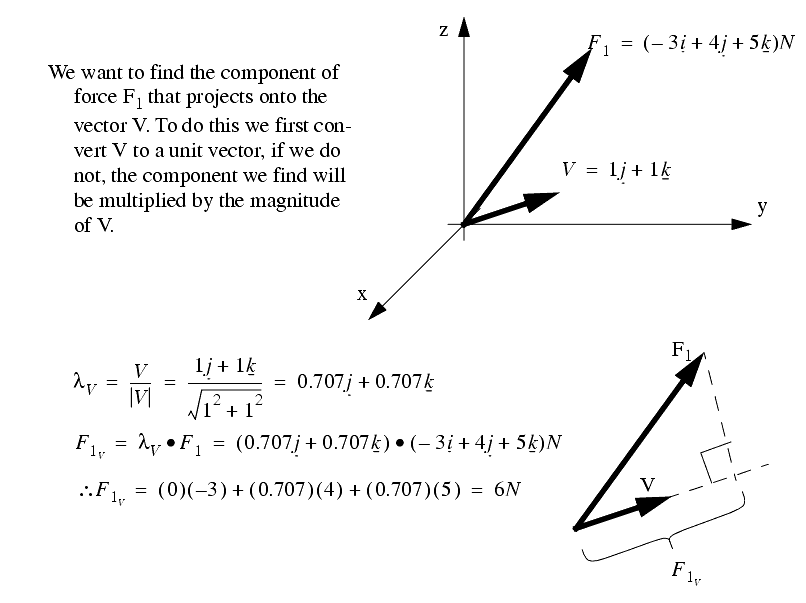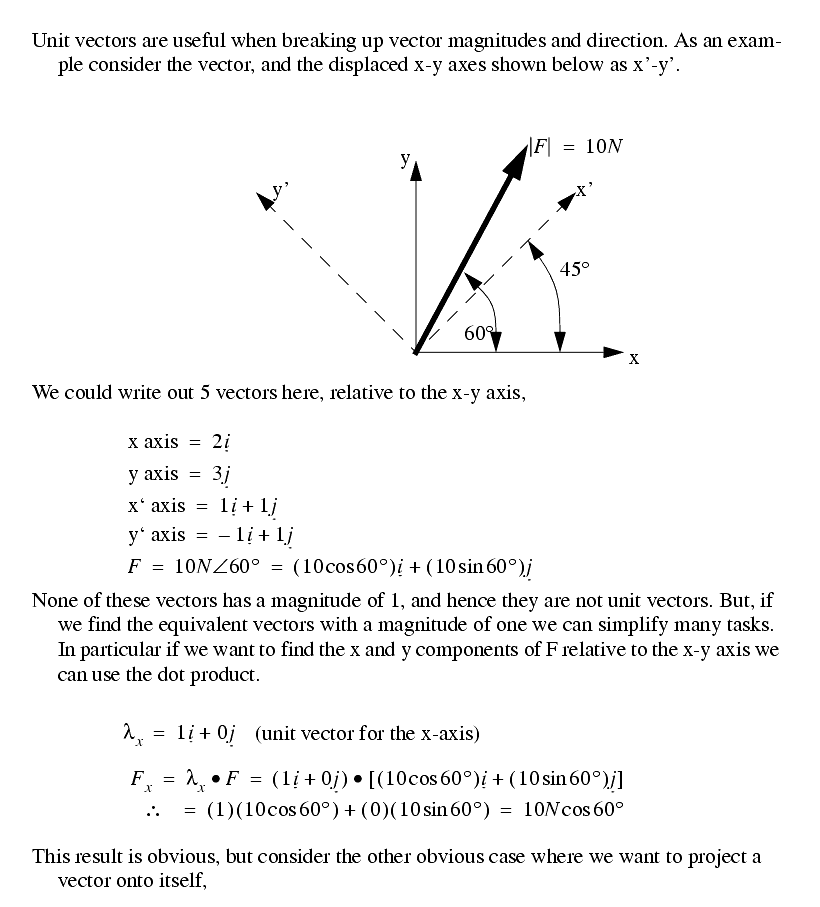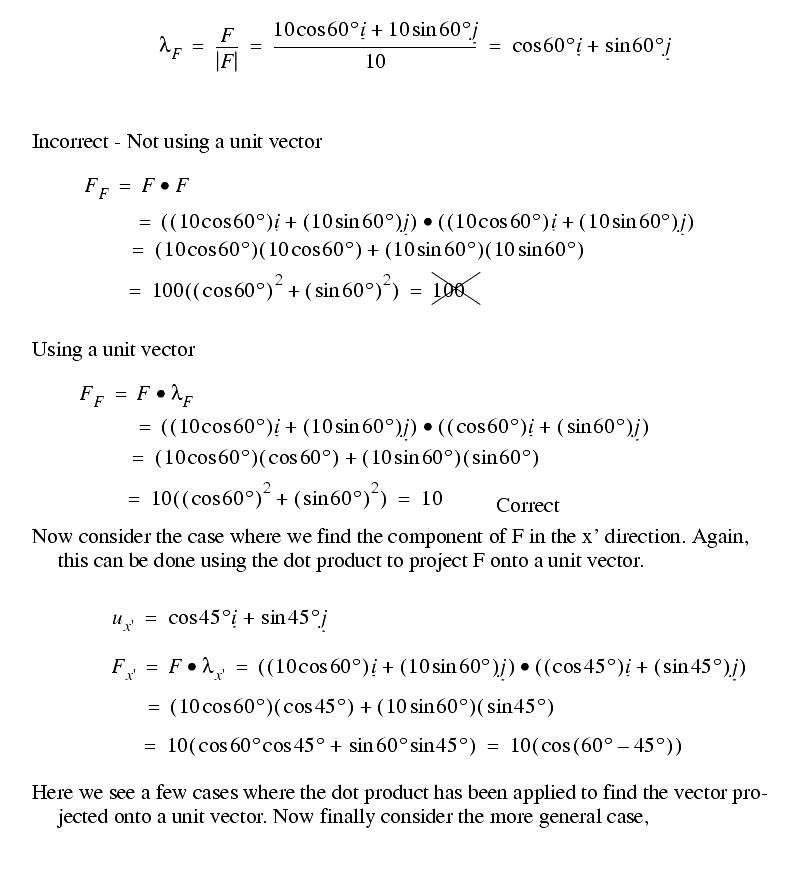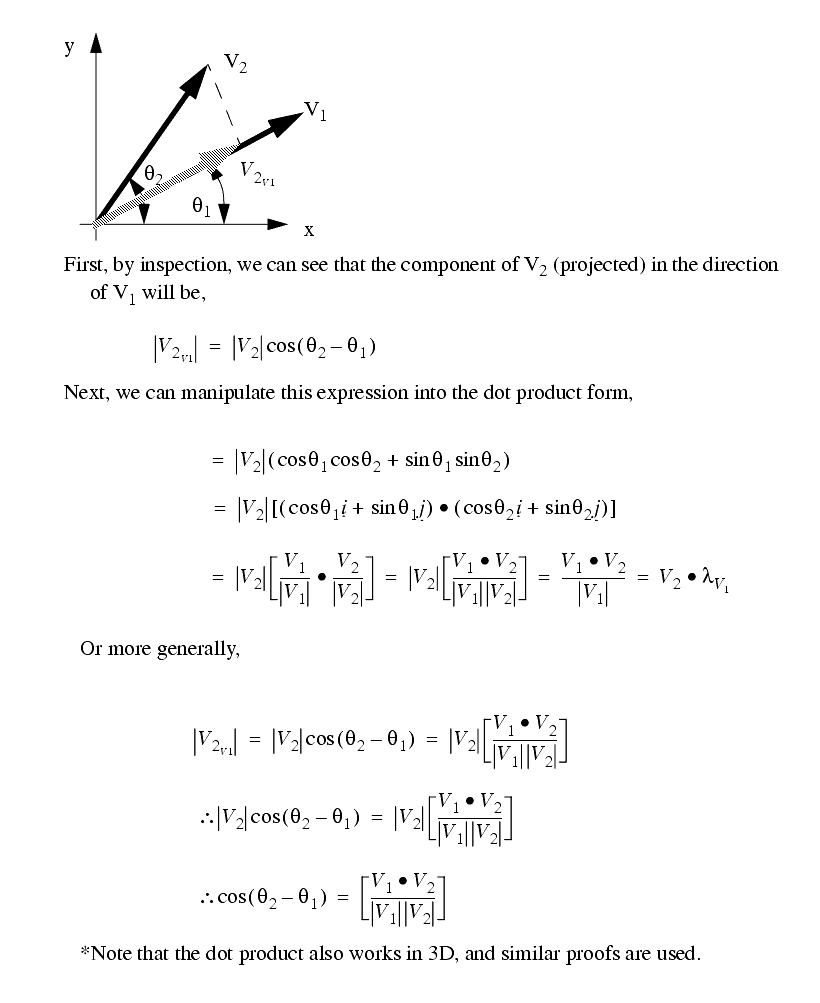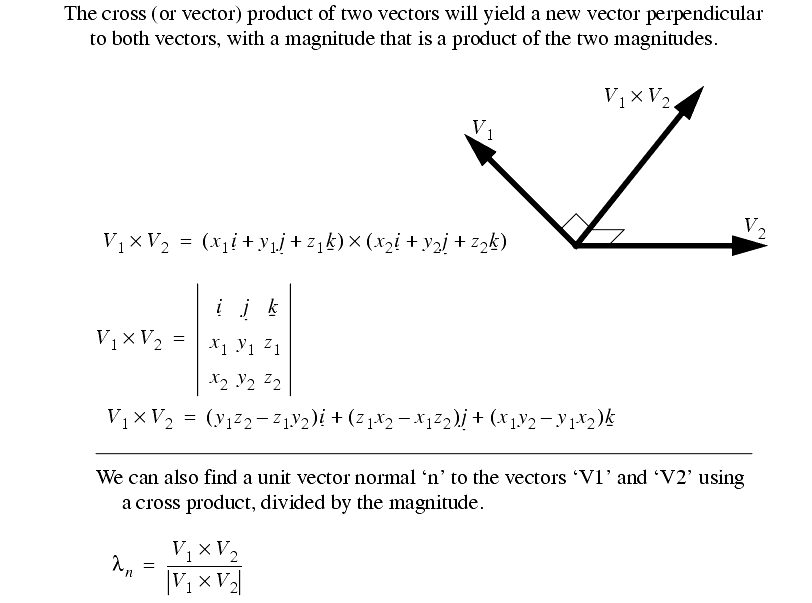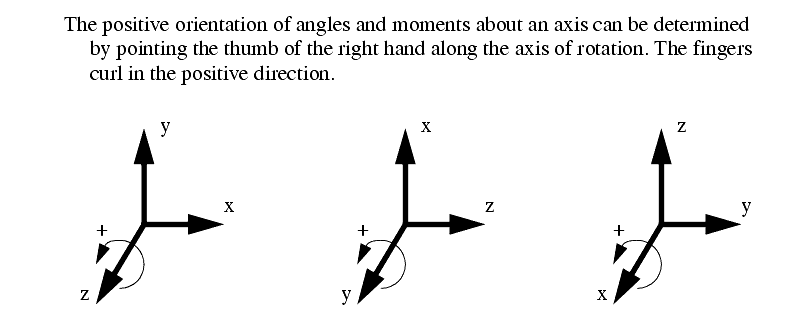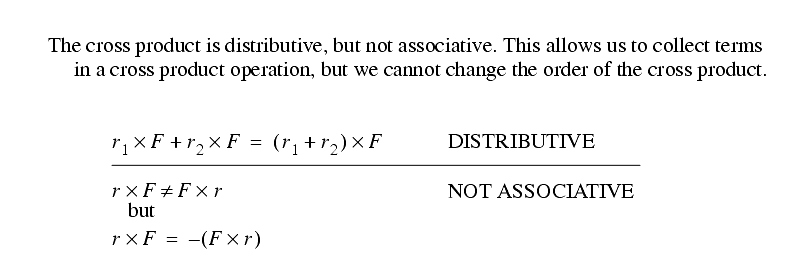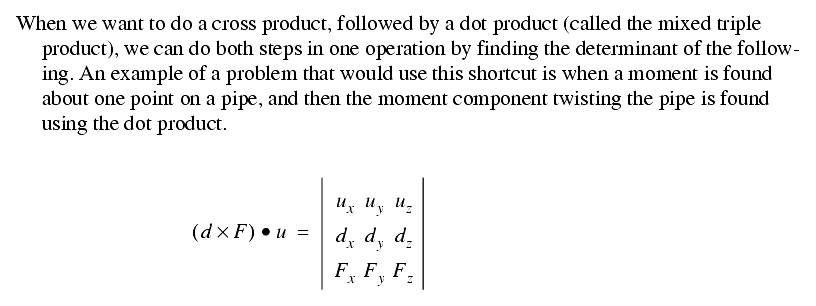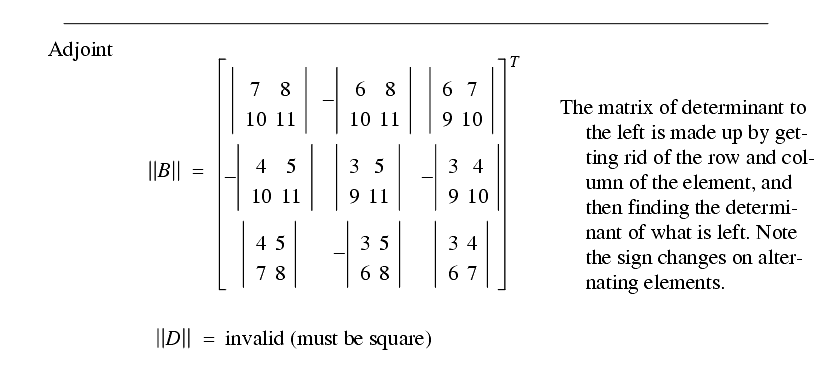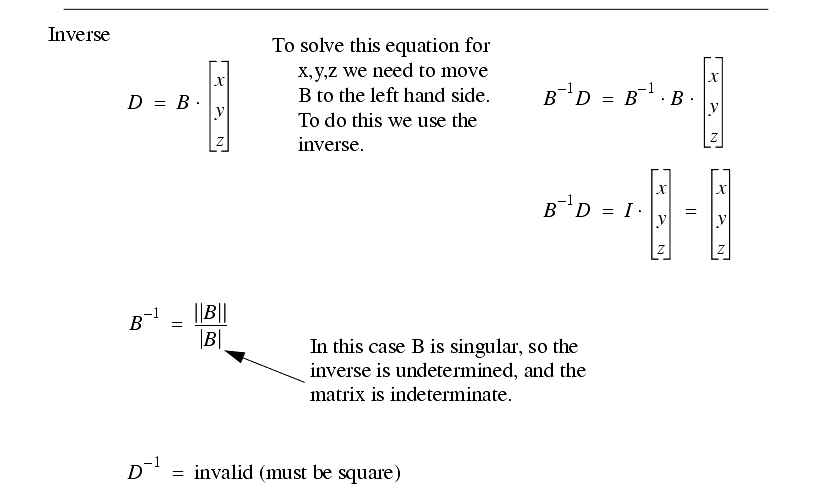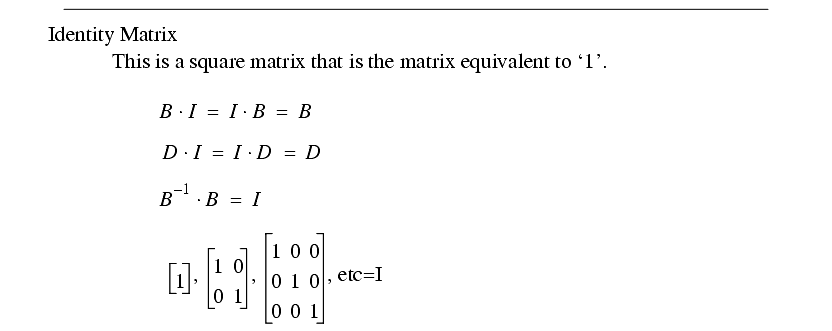35.5 MATRICES AND VECTORS
������������
35.5.1 Vectors
������������
Vectors are often drawn with arrows, as shown below,
Cartesian notation is also a common form of usage.
Vectors can be added and subtracted, numerically and graphically,
35.5.2 Dot (Scalar) Product
������������
We can use a dot product to find the angle between two vectors
We can use a dot product to project one vector onto another vector.
We can consider the basic properties of the dot product and units vectors.
35.5.3 Cross Product
������������
First, consider an example,
The basic properties of the cross product are,
When using a left/right handed coordinate system,
The properties of the cross products are,
35.5.4 Triple Product
������������
35.5.5 Matrices
������������
Matrices allow simple equations that drive a large number of repetitive calculations - as a result they are found in many computer applications.
A matrix has the form seen below,
Matrix operations are available for many of the basic algebraic expressions, examples are given below. There are also many restrictions - many of these are indicated.
The eigenvalue of a matrix is found using,
35.5.6 Solving Linear Equations with Matrices
������������
We can solve systems of equations using the inverse matrix,
We can solve systems of equations using Cramer's rule (with determinants),
35.5.7 Practice Problems
������������
1. Perform the matrix operations below.
2. Perform the vector operations below,
4. Solve the following equations using any technique,
5. Solve the following set of equations using a) Cramer's rule and b) an inverse matrix.
6. Perform the following matrix calculation. Show all work.
7. Perform the matrix calculations given below.
8. Find the dot product, and the cross product, of the vectors A and B below.
9. Perform the following matrix calculations.
10. Find the value of `x' for the following system of equations.
11. Perform the matrix calculations given below.
12. Solve the following set of equations with the specified methods.

